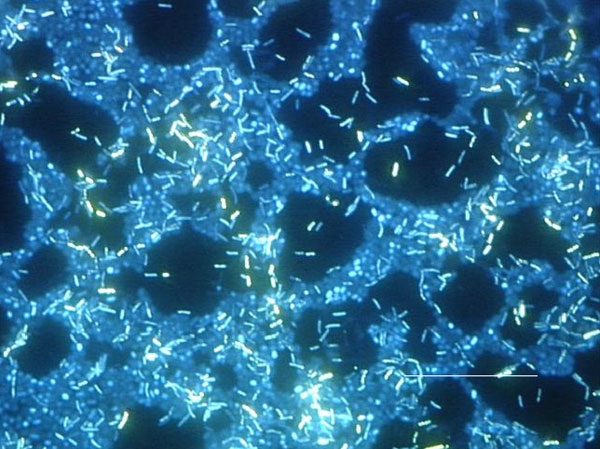A University of Windsor team is studying a biofilm filtration technology to better understand its seasonal versatility in municipal wastewater treatment.
Chris Weisener, professor of earth and environmental sciences and member of the Great Lakes Institute for Environmental Research, and GLIER post-doctoral fellow Rao Chaganti are testing a patented technology called a BioCord, created by industry partner Bishop Water Technologies.
The BioCord is a scaffold of synthetic polymer cords that indigenous bacteria will naturally colonize. The microorganisms, already present in the wastewater, will create a biofilm on the scaffold and this multilayered community will remove nitrogen and phosphorous from the wastewater. The BioCord substrate allows symbiotic layers of different bacteria to develop, mirroring the process that occurs in nature. BioCord Reactors can be used to treat polluted water in oceans, rivers, lakes, as well as from municipal and industrial sources.
“We are taking a natural phenomenon, a naturally-occurring relationship of microorganisms that can process nitrogen, and encouraging their growth in high concentration,” said Dr. Weisener. “The biofilm will then actively metabolize any residual ammonia left in the system.”
Weisner said the technology was successfully tested in a pilot project and his new, year-long project is set up in a full-fledged municipal wastewater treatment system. The BioCords are suspended from rafts, with 10 rafts placed in the final of four connected wastewater lagoons in Dundalk, Ontario, as part of the water treatment service for the Township of Southgate.
To understand the true efficiency of the BioCord and biofilm relationship, the study will compare the efficiency of the treatment method in summer and winter months. Specifically, Weisener and his team will look at the how the microbial community functions at a molecular level by looking at which genes are turned on and off from season to season.
“We know the technology works, but our challenge is to find out how the biofilm is affected by seasonal change; from the most optimum growing time in the summer to seeing what changes, if anything, in the efficiency of the microorganism communities when things slowdown in the winter,” Weisner said. “We know that nitrogen cycling organisms can operate well at low temperatures and we want to know to what degree.”
Working with the Dundalk facility allows the researchers to monitor the technology in real-world conditions.
The year-long project started in September 2016. It is funded with an NSERC Engage Plus grant along with funds from Ontario Genomics and Mitacs.










